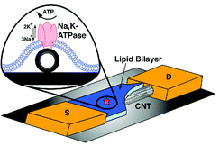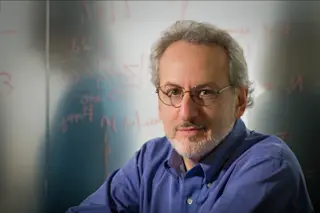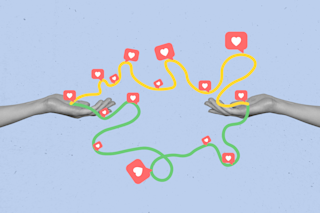The structure of Aleksandr Noy's new transistor is unimpressively simple: just a carbon nanotube connecting two metal electrodes. But what makes it special is what he and his team use to control it: adenosine triphosphate (ATP), the fuel from our own cells. The project, published in a study in Nano Letters, achieves a key step in unifying man and machine. The way it works: An insulator coats the ends of the nanotube, but not the middle—it's left exposed.
The entire device is then coated again, this time with a lipid bi-layer similar to those that form the membranes surrounding our body's cells [New Scientist].
Finally, the team poured a solution of ATP plus potassium and sodium across the transistor. That created an electric current, one that was stronger the more ATP they poured.
The magic is in the lipid bi-layer, which contains an ATP-sensitive protein that serves as a kind ...














